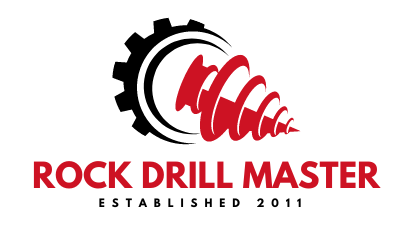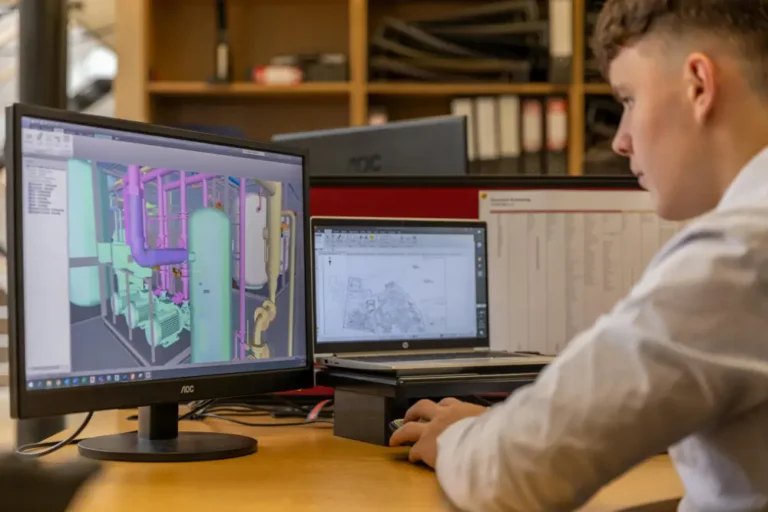When off-the-shelf tools aren’t cutting it (literally), it may be time to consider customization. In the realm of DTH drilling, customized drill bits can significantly boost performance under specific conditions. Rather than a one-size-fits-all approach, tailoring a bit’s design to match the rock formation or the project’s unique demands can result in faster drilling and longer bit life. In this article, we’ll explore how customization works, what aspects of a DTH bit can be customized, and the scenarios where investing in a custom drill bit pays off.
Why Consider a Custom DTH Bit?
Standard DTH bits are designed to cover a broad range of conditions. However, extreme or unusual drilling scenarios might benefit from a bit that’s tweaked beyond the standard offerings. Customization is often pursued to:
- Improve Penetration Rate: If you’re drilling in a specific formation where standard bits underperform, a custom design might penetrate faster. For example, a geothermal project in a particular volcanic rock could call for a unique face design to handle alternating hard and soft layers.
- Extend Bit Life: Custom hard-facing (applying wear-resistant material to the bit body) or special carbide grades can dramatically increase bit longevity in highly abrasive conditions.
- Achieve Special Hole Requirements: Non-standard hole sizes or shapes might need custom bits (e.g., an oversized bit to create a slight under-ream for casing, or a bit that drills a flat bottom hole).
- Equipment Constraints: Perhaps your rig or hammer has limitations, and a modified bit could alleviate problems. For instance, if your air supply is slightly underpowered, a bit with larger flush ports could be custom made to work with lower pressure, preventing clogging.
In short, when there’s a gap between what you need and what’s commercially available, customization bridges that gap.
(Understanding DTH Drill Bit Sizes and Applications) A DTH drill bit with a unique configuration. This orange bit was customized with a particular button layout and face grooves to tackle a specific rock condition. Such tailor-made bits can dramatically improve performance in niche applications.
What Aspects of a DTH Bit Can Be Customized?
Virtually every element of a DTH bit can be tweaked by manufacturers with the right expertise. Here are common customization areas:
- Face Design: While standard face designs (flat, concave, convex, etc.) cover most needs, combinations or new geometries can be made. For example, a bit could have a hybrid face – part flat, part concave – to address a certain rock’s tendency to fracture unpredictably. A drop-center could be made more pronounced than usual to increase its aggression in a soft zone.
- Carbide Button Profile and Arrangement: Custom bits might use special carbide shapes or placements:
- If a project is drilling an abrasive sandstone, one might request extra gauge buttons or oversize gauge buttons to protect the bit diameter longer.
- Alternatively, the carbide grade (material composition) can be selected. Standard bits use a general-purpose carbide grade. For extreme hardness, a tougher grade (slightly lower hardness but less likely to fracture) might be chosen. Or for a soft formation, a sharper, higher-grade carbide can be used to maximize cutting.
- The pattern or count of buttons can also change. Some custom bits reduce the number of carbides to increase chip size (and thus drilling speed) in softer rock. Others add carbides to improve rock breakage in hard rock at the cost of more drag.
- Bit Diameter or Gauge Shape: Need a 153 mm hole when standard is 152 mm? It’s a minor tweak for a manufacturer to produce a bit slightly oversize. More advanced: bits can be made with a stepped gauge or pilot design (for example, a bit drills a 155mm pilot and 165mm ream in one go) if you need a wider top section in the hole for some reason.
- Shank and Connection: Sometimes the hammer you have and the hole size you want don’t align with standard offerings. A custom shank could adapt a bit to a different hammer. For instance, maybe you have a particular 6″ hammer, but you want a bit that normally fits an 8″ hammer shank – some manufacturers can create a “crossover” bit.
- Materials and Coatings: Besides carbide, the steel body itself can be customized. High-end alloys or special heat treatment processes can be used if you’re, say, drilling in a situation where bits corrode or get extremely hot. Surface coatings like tungsten carbide coatings or titanium nitride on the bit body (less common but possible) can enhance wear resistance.
- Additional Features: This could include things like shock-absorbing elements (some custom bits for very hard rock have slightly spring-mounted buttons or novel damping designs), or cutting structure variations (like adding small secondary buttons or ridges to help with clay or coal stringers that tend to plug a bit).
Table: Examples of Custom Bit Modifications and Their Benefits
| Custom Modification | Purpose / Benefit | Use Case Scenario |
| Extra thick hardfacing on body | Greatly reduce steel wear (body wash) in abrasive formations (Maintain DTH Drill Bits: Prevent Body Wash & Extend Lifespan). | Drilling abrasive sandstone – custom bit lasts 2x longer. |
| Special carbide grade (toughened) | Carbides resist breakage in very hard, impact-shock conditions. | Intermittent hard inclusions (chert nodules) in formation causing button breakage on std bits. |
| Modified face (e.g., dual-step face) | Improved cuttings evacuation or dual-diameter drilling. | Need to drill a wider pocket at top of hole for casing seat while continuing with smaller pilot. |
| Increased flushing hole size or count | Handle water or low pressure air by moving cuttings more efficiently. | Using DTH in wet condition where standard bit clogs – custom larger flushing holes prevent bit from packing. |
| Customized shank or adaptor bit | Use an available hammer for a non-standard hole or casing system. | Adapting a DTH hammer to drill an HDD reamer or uncommon casing shoe. |
| Unique button layout (pattern) | Optimize rock breakage pattern for unusual rock texture. | Formation that tends to break in slabs – custom button placement induces better shattering. |
(Maintain DTH Drill Bits: Prevent Body Wash & Extend Lifespan) Close-up of a custom DTH bit with an uncommon button arrangement and an eye-catching green finish. This bit was designed for a specific abrasive rock, featuring more gauge protection and a slightly dome-shaped face for extra strength.
Case Study: Customization in Action
Consider a mining operation that encountered an extremely abrasive quartzite. Standard 6″ DTH bits were only achieving ~500 meters before the gauge wore out and the bit had to be discarded. After consulting with the manufacturer, they tried a custom 6″ bit where:
- The bit body had additional hardmetal strips welded on the gauge area (custom hardfacing).
- The carbide buttons used a grade with a bit more cobalt binder (making them a touch softer but more shock-absorbing).
- Two extra gauge buttons were added per side, and all gauge buttons were slightly larger in diameter.
The result? The custom bits drilled over 900 meters on average – almost double the life – and though they cost 25% more per bit, the cost per meter dropped significantly. Penetration rate also stayed more consistent over the bit’s life because the gauge retention kept the bit effective longer. This is a prime example where customization yielded clear economic benefits.
In another instance, a contractor drilling geothermal wells had an issue with bits sticking when they hit a swelling clay layer sandwiched in basalt. The solution was a custom flushing design: the manufacturer made a bit with much larger flushing ports and added an extra one. This allowed the clay cuttings to be cleared before they could swell and trap the bit. A small change solved a big downtime problem.
When Does Customization Make Sense?
Ordering custom DTH bits usually means a higher cost and sometimes a longer lead time (as they may be made-to-order). It makes sense when:
- The volume of drilling is high (so the gains in performance translate to big savings). If you’re only drilling a few meters, custom is overkill; but if you plan to drill thousands of meters in that condition, the return on a better bit is multiplied.
- Standard bits are failing or underperforming and causing significant delays or costs.
- Project is highly specialized with unique requirements (e.g., a one-off project drilling through a glacier into bedrock might need a custom bit to handle ice and rock together).
- No standard solution exists for the hole size or system you need.
On the other hand, if your conditions are average and standard bits are doing okay, customization might not yield enough benefit to justify cost. Always weigh the expected improvement against the premium and effort of going custom.
The Custom Bit Development Process
If you decide to pursue a custom bit, here’s how it typically works:
- Data Collection: You provide the manufacturer with detailed information: rock types (hardness, abrasiveness, geology description), existing bit performance (what’s failing or limiting), drilling parameters, hammer model, etc.
- Design Proposal: Their engineers will suggest design tweaks. This may involve a 3D model or drawings of the proposed custom bit for your approval.
- Prototype & Testing: In some cases, they’ll produce one or a small batch of custom bits. You test them in the field to see if the desired outcome is achieved.
- Iteration if Needed: If the first design isn’t perfect, further tweaks can be made. (For example, “penetration improved but still wearing out too fast on the shoulders – let’s add more hardfacing.”)
- Production: Once the custom design is proven, you can order the quantity needed. Keep in mind custom bits might not be stocked, so order in advance.
Many large drilling companies and mines collaborate with bit manufacturers on custom designs. Some manufacturers even have “specials” catalogs of custom bits they’ve made for others (and those designs might be available to you if similar conditions arise).
Conclusion
Customization is a powerful tool in the DTH drilling arsenal. By tailoring a drill bit to the exact conditions of your project, you can unlock higher performance levels than any generic bit could offer. Whether it’s pushing the penetration rate in a stubborn formation or eking out more lifespan in brutal conditions, custom bits address the specific pain points that standard bits might not solve.
However, not every project needs custom bits – they are usually justified in challenging scenarios where the gains outweigh the costs. It’s also essential to work with experienced manufacturers who understand the metallurgy and engineering involved; a poorly designed custom bit could backfire. When done right, though, customization of DTH bits can be a game-changer, turning a problematic drilling job into a profitable one with a relatively small change in the tool itself.
If you’re facing drilling challenges that you suspect could be solved by a different bit design, talk to your equipment supplier. Leverage their engineering expertise. The perfect bit for your job might not exist… yet – but it can be created.






